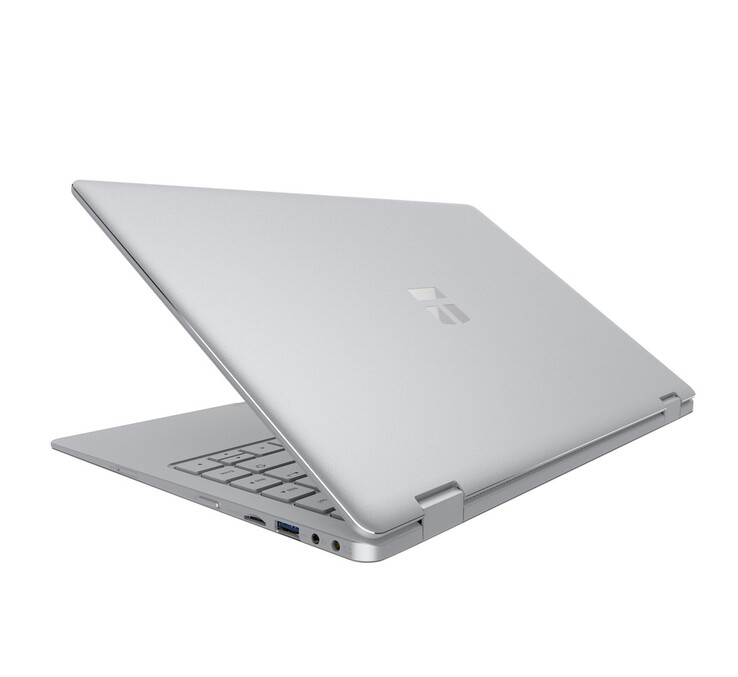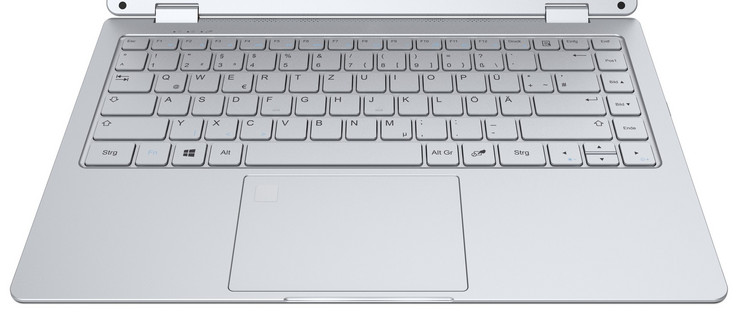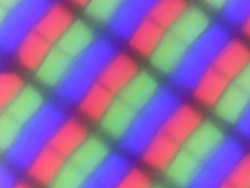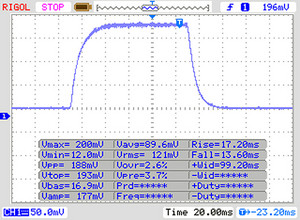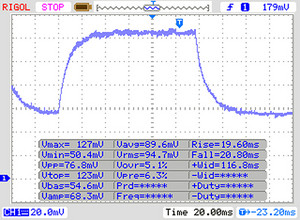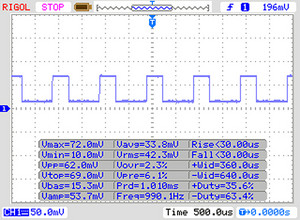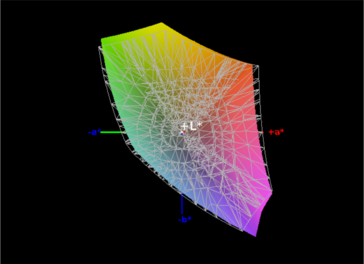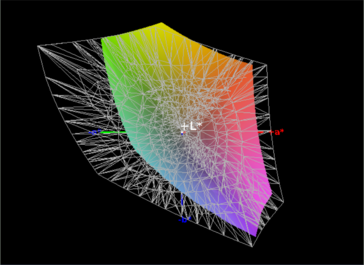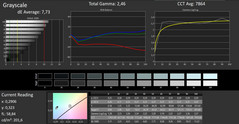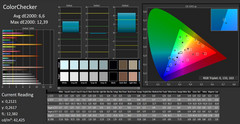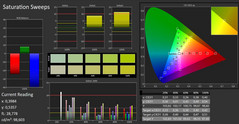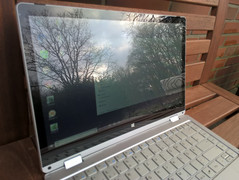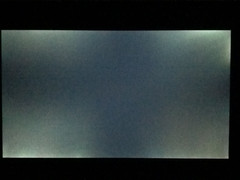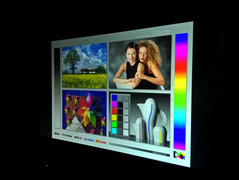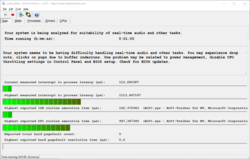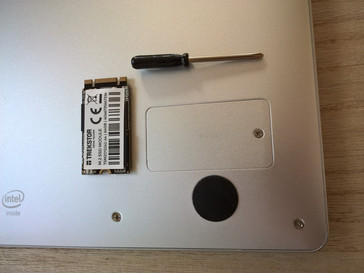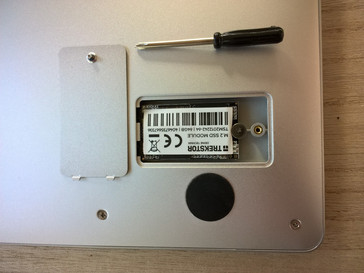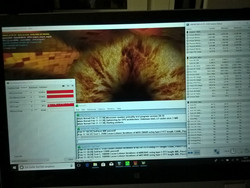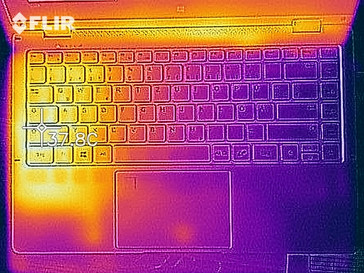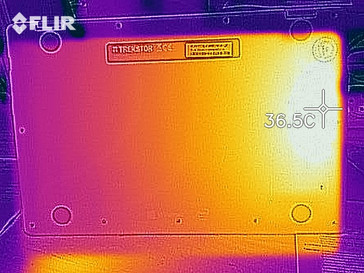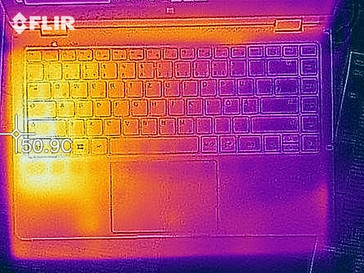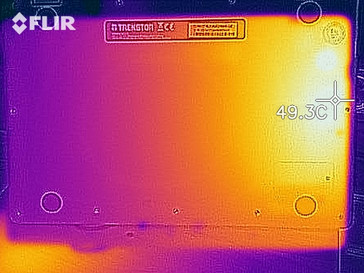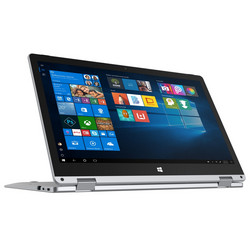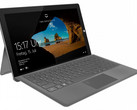Trekstor Primebook C13 (N3350, HD500) Laptop Review

With the Primebook C13, the manufacturer Trekstor has a low-priced 13-inch convertible on offer. The price-to-performance ratio is aimed at buyers who pay attention not only to the cost but also to the design, and who can live with low hardware specs.
With Intel’s Celeron N3350 processor and its integrated graphics unit known as the Intel HD Graphics 500 as well as 4 GB of RAM, the device is suitable only for simple applications. Office work and Internet-browsing should not cause any problems. People for whom 64 GB of internal eMMC storage is enough can upgrade the SSD via the externally-accessible M.2 slot.
We have selected a few other budget convertibles for this review. The devices we chose are powered by Intel’s Celeron or Atom CPUs. These devices include: The Spin 1 from Acer, the Asus Transformer Book, Lenovo’s IdeaPad Miix 320 and the Akoya E2228T from Medion.
Case & Connectivity
The Primebook C13 is very well-built. All the joints are level and clean. Nothing creaks or wobbles. The matte silver case looks appealing. Two 360-degree hinges ensure that the display can stay in a set position. The device is usable in both tablet and laptop modes.
The Primebook C13 offers only a limited set of options for connecting external devices. The convertible can be connected to an external monitor via Micro-HDMI. USB ports are also available. All USB ports use the USB 3.1 standard. One of the ports is a Type-C port.
To expand the storage capacity of the laptop you can either put in an M.2 SSD (an M.2 slot is located behind a maintenance hatch) or insert an SD card. SD cards with a capacity of up to 128 GB are supported. The read and write speeds are low. The M.2 slot has a length of 42 mm and can be accessed through the maintenance hatch on the underside of the device.
For wireless communication, the Primebook C13 relies on Intel’s Dual Band Wireless-AC 3265. This Wi-Fi module supports the fast Wireless-AC standard. However, it can only achieve transfer speeds of up to 345 Mbit/s because of its simple 1x1 antenna. When compared to the competing devices, this result is still fast and is on the normal level for a device in this price range.
The webcam can only be used as a stop-gap solution. Videos and photos are poorly-resolved and any sort of fast motion causes excessive amounts of blur.
Ports
| SD Card Reader | |
| average JPG Copy Test (av. of 3 runs) | |
| Asus Transformer Book T102HA-GR022T (Toshiba Exceria Pro M501 microSDXC 64GB) | |
| Trekstor Primebook C13 (Toshiba Exceria Pro M501 microSDXC 64GB) | |
| Medion Akoya E2228T-MD61250 (Toshiba Exceria Pro M501 microSDXC 64GB) | |
| maximum AS SSD Seq Read Test (1GB) | |
| Trekstor Primebook C13 (Toshiba Exceria Pro M501 microSDXC 64GB) | |
| Medion Akoya E2228T-MD61250 (Toshiba Exceria Pro M501 microSDXC 64GB) | |
| Networking | |
| iperf3 transmit AX12 | |
| Trekstor Primebook C13 | |
| Lenovo IdeaPad Miix 320-10ICR Pro LTE | |
| Medion Akoya E2228T-MD61250 | |
| Asus Transformer Book T102HA-GR022T | |
| Acer Spin 1 SP111-31-C79E | |
| iperf3 receive AX12 | |
| Acer Spin 1 SP111-31-C79E | |
| Trekstor Primebook C13 | |
| Asus Transformer Book T102HA-GR022T | |
| Medion Akoya E2228T-MD61250 | |
| Lenovo IdeaPad Miix 320-10ICR Pro LTE | |
Input Devices
The keyboard of the Primebook C13 offers a very short travel distance. However, it does have a firm actuation point. The layout lends itself well to fast typing and does not lead to any misstrokes, which can be attributed to the keyboard, during long typing sessions. The Primebook C13 uses a ClickPad as a replacement for the mouse. The touch inputs and gestures register well and the clickable areas of the pad also respond very well. The fingerprint sensor built into the ClickPad is somewhat obtrusive. That being said, it recognizes fingerprints in a fast and reliable fashion.
Display
The screen of the Primebook C13 has a resolution of 1920x1080. Above all, our measurements show that the display has a low brightness. However, this also applies to other low-priced convertibles. Because of a reflective screen surface, it can be difficult to read the screen content in brightly-lit environments. The contrast ratio is on the normal level for a device with this price tag.
| |||||||||||||||||||||||||
Brightness Distribution: 88 %
Center on Battery: 201 cd/m²
Contrast: 914:1 (Black: 0.22 cd/m²)
ΔE ColorChecker Calman: 6.6 | ∀{0.5-29.43 Ø4.78}
ΔE Greyscale Calman: 7.73 | ∀{0.09-98 Ø5}
93% sRGB (Argyll 1.6.3 3D)
61% AdobeRGB 1998 (Argyll 1.6.3 3D)
66.9% AdobeRGB 1998 (Argyll 3D)
93.3% sRGB (Argyll 3D)
65.4% Display P3 (Argyll 3D)
Gamma: 2.46
CCT: 7864 K
| Trekstor Primebook C13 PBTB133F006-A, , 1920x1080, 13.3" | Acer Spin 1 SP111-31-C79E AU Optronics B116HAN05.0, , 1920x1080, 11.6" | Lenovo IdeaPad Miix 320-10ICR Pro LTE YF102, MS_9003, , 1920x1200, 10.1" | Asus Transformer Book T102HA-GR022T AU Optronics AUO20D4, , 1280x800, 10.1" | Medion Akoya E2228T-MD61250 Chi Mei N116HSE-EJ1, , 1920x1080, 11.6" | |
|---|---|---|---|---|---|
| Display | -23% | -15% | -18% | -14% | |
| Display P3 Coverage (%) | 65.4 | 49.67 -24% | 54.2 -17% | 53.4 -18% | 59.3 -9% |
| sRGB Coverage (%) | 93.3 | 72.6 -22% | 81.4 -13% | 76.9 -18% | 77.3 -17% |
| AdobeRGB 1998 Coverage (%) | 66.9 | 51.4 -23% | 56 -16% | 55.3 -17% | 56.5 -16% |
| Response Times | 14% | 19% | 17% | 25% | |
| Response Time Grey 50% / Grey 80% * (ms) | 39 ? | 36 ? 8% | 32 ? 18% | 29 ? 26% | 30 ? 23% |
| Response Time Black / White * (ms) | 30 ? | 24 ? 20% | 24 ? 20% | 28 ? 7% | 22 ? 27% |
| PWM Frequency (Hz) | 990 ? | 19000 ? | 294 ? | 200 ? | |
| Screen | 13% | -0% | 31% | 26% | |
| Brightness middle (cd/m²) | 201 | 251 25% | 251 25% | 530 164% | 504 151% |
| Brightness (cd/m²) | 207 | 247 19% | 244 18% | 491 137% | 497 140% |
| Brightness Distribution (%) | 88 | 86 -2% | 79 -10% | 88 0% | 86 -2% |
| Black Level * (cd/m²) | 0.22 | 0.21 5% | 0.33 -50% | 0.46 -109% | 0.52 -136% |
| Contrast (:1) | 914 | 1195 31% | 761 -17% | 1152 26% | 969 6% |
| Colorchecker dE 2000 * | 6.6 | 4.27 35% | 5.34 19% | 4.33 34% | 4.48 32% |
| Colorchecker dE 2000 max. * | 12.39 | 11 11% | 9.91 20% | 7.32 41% | 9.38 24% |
| Greyscale dE 2000 * | 7.73 | 3.77 51% | 6.04 22% | 3.51 55% | 1.63 79% |
| Gamma | 2.46 89% | 2.26 97% | 3.23 68% | 2.36 93% | 2.41 91% |
| CCT | 7864 83% | 6524 100% | 7491 87% | 7007 93% | 6715 97% |
| Color Space (Percent of AdobeRGB 1998) (%) | 61 | 47 -23% | 51 -16% | 50 -18% | 51 -16% |
| Color Space (Percent of sRGB) (%) | 93 | 72 -23% | 81 -13% | 77 -17% | 77 -17% |
| Total Average (Program / Settings) | 1% /
6% | 1% /
-1% | 10% /
20% | 12% /
18% |
* ... smaller is better
Display Response Times
| ↔ Response Time Black to White | ||
|---|---|---|
| 30 ms ... rise ↗ and fall ↘ combined | ↗ 17 ms rise | |
| ↘ 13 ms fall | ||
| The screen shows slow response rates in our tests and will be unsatisfactory for gamers. In comparison, all tested devices range from 0.1 (minimum) to 240 (maximum) ms. » 79 % of all devices are better. This means that the measured response time is worse than the average of all tested devices (20.2 ms). | ||
| ↔ Response Time 50% Grey to 80% Grey | ||
| 39 ms ... rise ↗ and fall ↘ combined | ↗ 19 ms rise | |
| ↘ 20 ms fall | ||
| The screen shows slow response rates in our tests and will be unsatisfactory for gamers. In comparison, all tested devices range from 0.165 (minimum) to 636 (maximum) ms. » 58 % of all devices are better. This means that the measured response time is worse than the average of all tested devices (31.6 ms). | ||
Screen Flickering / PWM (Pulse-Width Modulation)
| Screen flickering / PWM detected | 990 Hz | ≤ 20 % brightness setting | |
The display backlight flickers at 990 Hz (worst case, e.g., utilizing PWM) Flickering detected at a brightness setting of 20 % and below. There should be no flickering or PWM above this brightness setting. The frequency of 990 Hz is quite high, so most users sensitive to PWM should not notice any flickering. In comparison: 53 % of all tested devices do not use PWM to dim the display. If PWM was detected, an average of 8108 (minimum: 5 - maximum: 343500) Hz was measured. | |||
The Primebook C13 is not usable outside. The environment is reflected by the display to such an extent that it is nearly impossible to make out anything on the screen. The display of our review device is plagued by reflections not only outdoors but also indoors. No other device in this price range covers 90% of the sRGB color space.
Performance
Our review device uses the Celeron N3350 as the CPU and Intel’s HD Graphics 500 as the GPU. With 4 GB of RAM and 64 GB of storage space, this is the only hardware configuration in which the Trekstor Primebook C13 is available (there is also an LTE variant of this laptop). However, the manufacturer did provide a comfortable way to expand the storage capacity.
You can increase the amount of available storage space by up to 128 GB by means of a MicroSD card. Besides this, there is also a maintenance hatch on the underside of the device behind which lies an M.2 SSD slot with a length of 42 mm. You can find appropriate SSDs with a storage capacity of up to 256 GB in Trekstor’s online store.
Processor
The Celeron N3350 is a dual-core processor with a Turbo frequency of 2.4 GHz. However, this clock rate can only be achieved with appropriate cooling. Passively cooled devices drop the clock speed down to 1.1 GHz. Our review device is passively cooled. This is why it can only run at its maximum clock speed for a short time. When the CPU is not taxed, the clock rate is relatively constant at 1.7 GHz.
Our review device delivers good results in the Cinebench R15 benchmark. With 88 points in the multi-core benchmark, its score is slightly above average when compared to other devices with Intel’s Celeron N3350. A comparison with the competing devices shows that you can expect even more performance from cheaper convertibles.
| Cinebench R15 | |
| CPU Single 64Bit | |
| Acer Spin 1 SP111-31-C79E | |
| Trekstor Primebook C13 | |
| Asus Transformer Book T102HA-GR022T | |
| Lenovo IdeaPad Miix 320-10ICR Pro LTE | |
| Medion Akoya E2228T-MD61250 | |
| CPU Multi 64Bit | |
| Acer Spin 1 SP111-31-C79E | |
| Asus Transformer Book T102HA-GR022T | |
| Medion Akoya E2228T-MD61250 | |
| Lenovo IdeaPad Miix 320-10ICR Pro LTE | |
| Trekstor Primebook C13 | |
System Performance
In day-to-day use, the Primebook C13 runs very smoothly. Simple tasks are performed quickly, folders open without any delays and even Internet-browsing presents no problems for the convertible. Our benchmark results confirm this impression. In the PCMark 8 benchmark, our review device achieves the best score among the competing devices.
You can find out what kind of performance other devices with Intel’s Celeron N3350 can achieve on our CPU Benchmarks page.
| PCMark 8 - Home Score Accelerated v2 | |
| Trekstor Primebook C13 | |
| Asus Transformer Book T102HA-GR022T | |
| Acer Spin 1 SP111-31-C79E | |
| Medion Akoya E2228T-MD61250 | |
| Lenovo IdeaPad Miix 320-10ICR Pro LTE | |
| PCMark 8 Home Score Accelerated v2 | 1629 points | |
Help | ||
Storage Device
The Primebook C13 comes equipped with 64 GB of eMMC flash memory. With its comparatively good write and read rates, it makes a positive contribution to the responsiveness of the system. Other convertibles with eMMC flash memory are at least 15% slower.
You can find out how the Primebook C13’s storage device stacks up against other HDDs and SSDs on our HDD/SSD Benchmarks page.
| Trekstor Primebook C13 SanDisk DF4064 | Acer Spin 1 SP111-31-C79E Toshiba MQ01ABF050 | Lenovo IdeaPad Miix 320-10ICR Pro LTE SanDisk DF4128 | Asus Transformer Book T102HA-GR022T 128 GB eMMC Flash | Medion Akoya E2228T-MD61250 64 GB eMMC Flash | |
|---|---|---|---|---|---|
| CrystalDiskMark 3.0 | -71% | -30% | -16% | -20% | |
| Read Seq (MB/s) | 265.4 | 109.1 -59% | 92.7 -65% | 139 -48% | 119.3 -55% |
| Write Seq (MB/s) | 113.8 | 107.3 -6% | 54.5 -52% | 54.1 -52% | 41.38 -64% |
| Read 512 (MB/s) | 207.2 | 35.89 -83% | 68.6 -67% | 121 -42% | 101.3 -51% |
| Write 512 (MB/s) | 85.9 | 45.28 -47% | 39.86 -54% | 44.39 -48% | 34.28 -60% |
| Read 4k (MB/s) | 5.212 | 0.482 -91% | 6.705 29% | 9.935 91% | 10.74 106% |
| Write 4k (MB/s) | 9.903 | 1.037 -90% | 8.555 -14% | 9.877 0% | 11.3 14% |
| Read 4k QD32 (MB/s) | 32.26 | 1.003 -97% | 32.71 1% | 30.03 -7% | 14.76 -54% |
| Write 4k QD32 (MB/s) | 13.83 | 1.043 -92% | 11.5 -17% | 10.67 -23% | 14.57 5% |
Graphics Card
You cannot expect a whole lot of performance from Intel’s integrated HD Graphics 500. Nevertheless, the performance is quite good when compared to other cheap convertibles. The Primebook C13 delivers the best results when compared to the devices that we have selected for this review.
You can learn what kind of performance you can expect from Intel’s HD Graphics 500 on our GPU Benchmarks page.
| 3DMark 11 - 1280x720 Performance GPU | |
| Trekstor Primebook C13 | |
| Acer Spin 1 SP111-31-C79E | |
| Asus Transformer Book T102HA-GR022T | |
| Lenovo IdeaPad Miix 320-10ICR Pro LTE | |
| Medion Akoya E2228T-MD61250 | |
| 3DMark 11 Performance | 599 points | |
Help | ||
Gaming Performance
Intel’s HD Graphics 500 is a budget graphics adapter that is not fit for running demanding video games. All of the games we tested were unplayable. However, simple, casual games from the Windows Store can be run smoothly.
To learn what kind of gaming experience you can expect from Intel’s HD Graphics 500, visit our Gaming Benchmarks page.
| low | med. | high | ultra | |
|---|---|---|---|---|
| BioShock Infinite (2013) | 22.5 | 9.6 |
Emissions & Energy Management
System Noise
Because the Primebook C13 has no fan, there is no fan noise to talk about. However, in very quiet environments you can hear a soft buzzing sound coming from the place where the CPU is located. This phenomenon is most pronounced under load.
Temperature
When idle, the fanless Primebook C13 remains very cool. However, it can get quite hot under load. On the underside of the device, we measured temperatures of up to 50 °C (122 °F). Nevertheless, our review device is still able to maintain its performance.
At the end of our one-hour stress test, the device stopped registering both key strokes and mouse clicks. According to HWiNFO, the CPU clock rate stood at 1.6 GHz at that time and the core temperatures exceeded the 90-degree Celsius mark. Because such extreme loads are very unlikely to occur during normal use, you should not be concerned about crashes on account of high temperatures.
(±) The maximum temperature on the upper side is 41 °C / 106 F, compared to the average of 35.4 °C / 96 F, ranging from 19.6 to 60 °C for the class Convertible.
(+) The bottom heats up to a maximum of 35.8 °C / 96 F, compared to the average of 36.8 °C / 98 F
(+) In idle usage, the average temperature for the upper side is 29.1 °C / 84 F, compared to the device average of 30.3 °C / 87 F.
(±) The palmrests and touchpad can get very hot to the touch with a maximum of 36.4 °C / 97.5 F.
(-) The average temperature of the palmrest area of similar devices was 27.9 °C / 82.2 F (-8.5 °C / -15.3 F).
Speakers
You can play back audio content, with a few limitations. Even though the Primebook C13 lacks when it comes to bass, the mids and the highs are reproduced quite well. Naturally, you are not going to get a clean and saturated sound with a device like this. But, the sound you do get is neither tinny nor hollow.
Trekstor Primebook C13 audio analysis
(-) | not very loud speakers (67.4 dB)
Bass 100 - 315 Hz
(-) | nearly no bass - on average 19.5% lower than median
(+) | bass is linear (3.4% delta to prev. frequency)
Mids 400 - 2000 Hz
(+) | balanced mids - only 4.8% away from median
(±) | linearity of mids is average (7.5% delta to prev. frequency)
Highs 2 - 16 kHz
(+) | balanced highs - only 3.1% away from median
(+) | highs are linear (3.7% delta to prev. frequency)
Overall 100 - 16.000 Hz
(±) | linearity of overall sound is average (22.5% difference to median)
Compared to same class
» 68% of all tested devices in this class were better, 4% similar, 28% worse
» The best had a delta of 6%, average was 20%, worst was 57%
Compared to all devices tested
» 65% of all tested devices were better, 6% similar, 29% worse
» The best had a delta of 4%, average was 24%, worst was 134%
Apple MacBook 12 (Early 2016) 1.1 GHz audio analysis
(+) | speakers can play relatively loud (83.6 dB)
Bass 100 - 315 Hz
(±) | reduced bass - on average 11.3% lower than median
(±) | linearity of bass is average (14.2% delta to prev. frequency)
Mids 400 - 2000 Hz
(+) | balanced mids - only 2.4% away from median
(+) | mids are linear (5.5% delta to prev. frequency)
Highs 2 - 16 kHz
(+) | balanced highs - only 2% away from median
(+) | highs are linear (4.5% delta to prev. frequency)
Overall 100 - 16.000 Hz
(+) | overall sound is linear (10.2% difference to median)
Compared to same class
» 7% of all tested devices in this class were better, 2% similar, 91% worse
» The best had a delta of 5%, average was 18%, worst was 53%
Compared to all devices tested
» 4% of all tested devices were better, 1% similar, 94% worse
» The best had a delta of 4%, average was 24%, worst was 134%
Frequency diagram in comparison (checkboxes can be checked and unchecked!)
Energy Consumption
According to our measurements, the Primebook C13 exhibits a moderate power draw. Sure, there are more energy-efficient devices out there, but when taking the screen size and the hardware configuration into consideration the power draw of our review device appears to be quite acceptable. Under load, the energy consumption of our review device rises to over 20 watts. This is why the included 24-watt AC adapter might struggle to reliably supply the device with enough energy.
| Off / Standby | |
| Idle | |
| Load |
|
Key:
min: | |
Battery Life
With more than 4 hours, the battery life of the Primebook C13 is not that short. However, most competing devices have a longer battery life. In our practically-oriented Wi-Fi test, we simulate activities associated with surfing the web. During this test, the display brightness is set to 150 cd/m² (or 80% in this case).
| Battery Runtime - WiFi Websurfing | |
| Asus Transformer Book T102HA-GR022T | |
| Acer Spin 1 SP111-31-C79E | |
| Medion Akoya E2228T-MD61250 | |
| Lenovo IdeaPad Miix 320-10ICR Pro LTE | |
| Trekstor Primebook C13 | |
Pros
Cons
Verdict
With the Primebook C13, Trekstor brings a 13-inch convertible to the market that shines, above all, with its display size and its expandability. The system performance is sufficient for simple office work and Internet-browsing. Because there is not a lot of storage space straight out of the box, the inclusion of an empty M.2 slot, which is located behind a maintenance hatch, is especially welcome. Therefore, the storage capacity can be expanded without any hassle.
The Primebook C13 from Trekstor is a simple convertible that can replace a notebook, thanks to its size. Buyers should not expect too much in terms of performance. The convertible is only suitable for Internet-surfing and office work.
With the Trekstor Primebook C13, buyers will not be able to do much more than the above-mentioned activities (i.e., Internet-browsing and office work). The device can run very simple video games, but it is not suitable for such tasks as image-editing, for example. We are very satisfied with the design and build quality of our review device. The device benefits from its thin body, above all, in tablet mode. The highly reflective screen surface can be blamed on the touch interface. The display is plagued by reflections even indoors.
Trekstor Primebook C13
- 02/22/2018 v6 (old)
Mike Wobker





